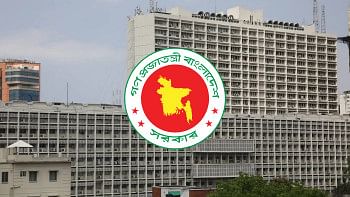Cut in export incentives to weigh on textile sector

The government's decision to further cut incentives on export receipts will badly hurt the domestic textile sector which bears an investment of $22 billion, a top leader of Bangladesh Textile Mills Association (BTMA) said yesterday.
Moreover, the primary textile sector, which has been working as the garment industry's main backward linkage, will lose its competitiveness in international markets, said BTMA President Mohammad Ali Khokon.
The government needs to formulate a long-term roadmap for the textile and garment sector to survive and grow well into the country's graduation into a developing nation, he said.
Other comparator countries have already devised such plans and those are working well, he told a press conference at the BTMA office in Dhaka.
For instance, India graduated from least developed country (LDC) status in 2004 and still provides a lot of incentives as alternatives to direct cash subsidies for the growth of the textile and garment sectors, said Khokon.
As a result, the difference in the cost of production of a kilogramme of 30 count yarn in Bangladesh and India is currently 22 cents, he said.
Unfortunately, this advantage is leading to 13 percent of Bangladesh's annual demand for yarn being met with imports from India, causing the local primary textile sector to suffer, he added.
Indian yarn sellers are flooding the Bangladesh market with their cheap products and dominating local yarn manufacturers, he said.
Asked whether the BTMA would ask the government to enforce anti-dumping initiatives, Khokon said lodging complaints is not something that the BTMA should take up.
The government will deal with state level issues and in this case, it can be assisted by the apex trade body, the Federation of Bangladesh Chambers of Commerce and Industry, he said.
The BTMA chief also demanded the withdrawal of a Bangladesh Bank circular of June 30 this year.
The circular announced that cash subsidy on use of local yarn had been reduced to 1.5 percent from 4 percent as a part of preparations for the LDC graduation in 2026.
In January, the government had also reduced the cash subsidy on export receipts to some extent.
However, Bangladesh will enjoy trade benefits of the European Union (EU) as an LDC up to 2029 as the EU always offers graduating LDCs a grace period of three years, said Khokon.
Moreover, the 13th ministerial conference of the World Trade Organization (WTO) held in Abu Dhabi in February this year decided to extend the LDC trade benefits to graduating LDCs for three more years, he said.
So, still there is a long time to go until final LDC graduation. The government should continue the trade facilities up to that time for the growth of the economy, the BTMA chief also said.
The government should also formulate a long-term policy support to address challenges in the post LDC graduation period, he added.
Of the major costs behind the production of every kg of yarn in Bangladesh, gas accounts for 27 cents whereas it was 11 cents prior to a price hike, he said.
Similarly bank loan interest accounts for 11 cents whereas it was 8 cents around a year ago, he said.
The mills have been running at 50 percent capacity because of low gas pressure, he added.
The government also increased the price of gas to Tk 31 per unit for the textile sector but kept it at Tk 15 per unit for power plants, which is discriminatory, he added.
Currently, the textile sector needs 3,800 million metre cubic feet of gas per day (MMCFD) but the government can supply 2,631 MMCFD.
Damage inflicted during the recent Cyclone Remal has reduced the gas supply to 2,350 MMCFD, for which the local millers are facing a severe gas crisis.
Regarding cotton imports, the BTMA chief said since Bangladesh does not produce any cotton, the local millers import nearly $4 billion worth of the fibre, helping to turn the country into the second-largest garment exporter after China.
Along with the continuation of cotton imports, the government should also facilitate imports of man-made fibres as the demand for garment items made from artificial fibres has been rising worldwide and an opportunity has been created for the country, he said.

 For all latest news, follow The Daily Star's Google News channel.
For all latest news, follow The Daily Star's Google News channel. 



Comments